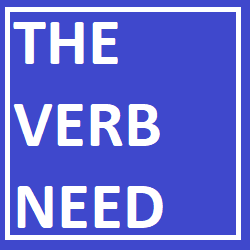Here are some key points to keep in mind when using the verb “need”:
1- “Need” as a Main Verb: When “need” is used as a main verb, it follows the typical verb conjugation rules. In this form, it expresses the necessity for someone or something to have or require something else. For example:
– “I need a pen to write the letter.”
– “They need more time to complete the project.”
– “The car needs regular maintenance.”
2- “Need” as a Modal Verb: “Need” can also be used as a modal verb, similar to “must” or “should.” In this form, it is followed by an infinitive without “to” and is used to express necessity or obligation. For example:
– “You need to study for the exam.”
– “We need to finish this report by tomorrow.”
– “She needs to take a break and relax.”
3- Negative Forms of “Need”: To form the negative of “need” as a main verb or a modal verb, the word “not” is inserted between “need” and the infinitive verb. For example:
– “He does not need to go to the store.”
– “They don’t need any help right now.”
– “She needed not to worry about the outcome.”
4- Question Forms of “Need”: In question forms, “need” is usually placed at the beginning of the sentence, followed by the subject and the main verb. For example:
– “Do you need any assistance?”
– “Need they complete the assignment today?”
– “Does he need help with his luggage?”
5- “Need” with “To” and “Ing” Forms: Depending on the context, “need” can be followed by the infinitive form (“to + verb”) or the gerund form (“-ing”). The choice between the two forms depends on the intended meaning. For example:
– “I need to finish my homework.” (expresses an action that needs to be completed)
– “She needs help with her presentation.” (expresses a general necessity for assistance) |
